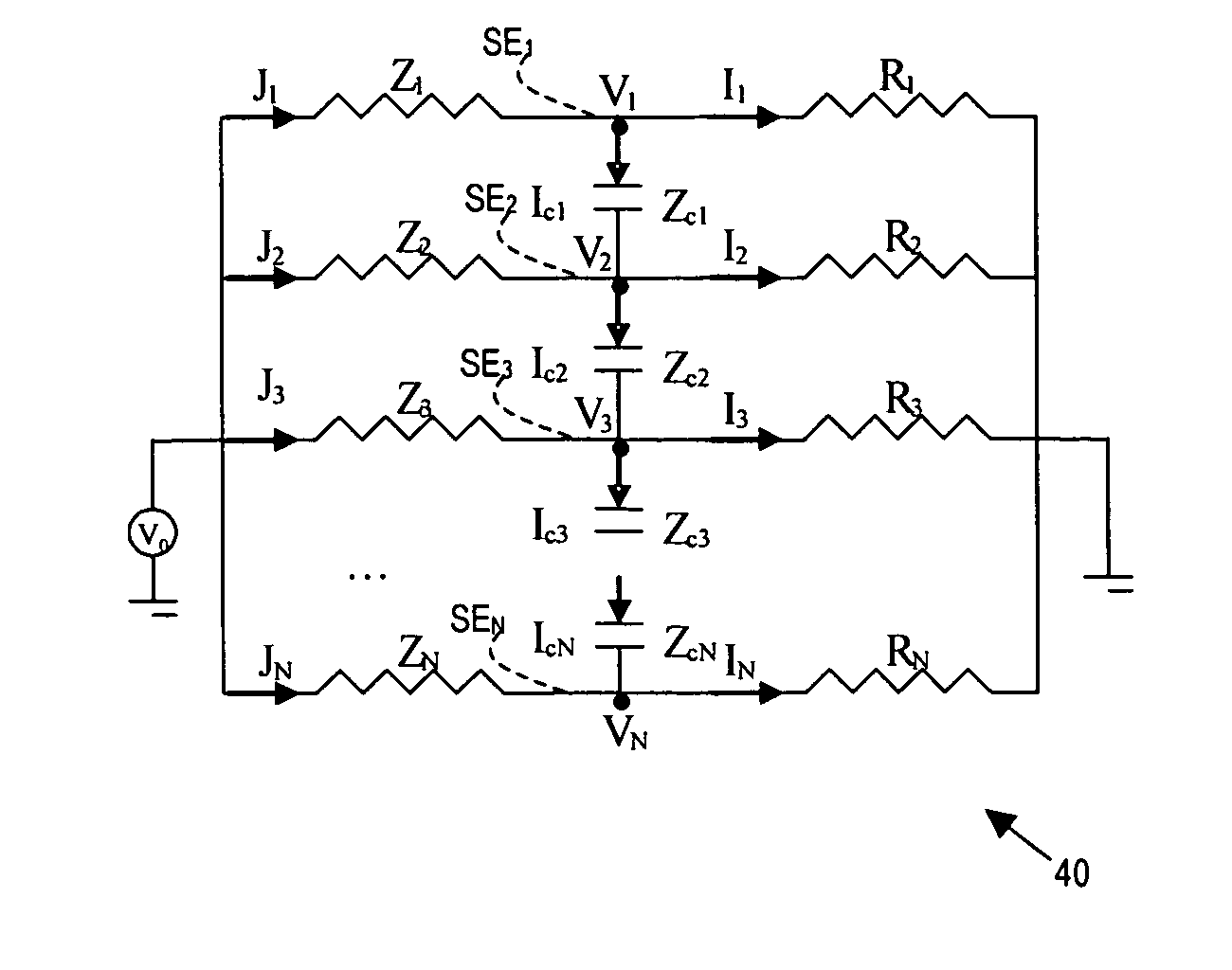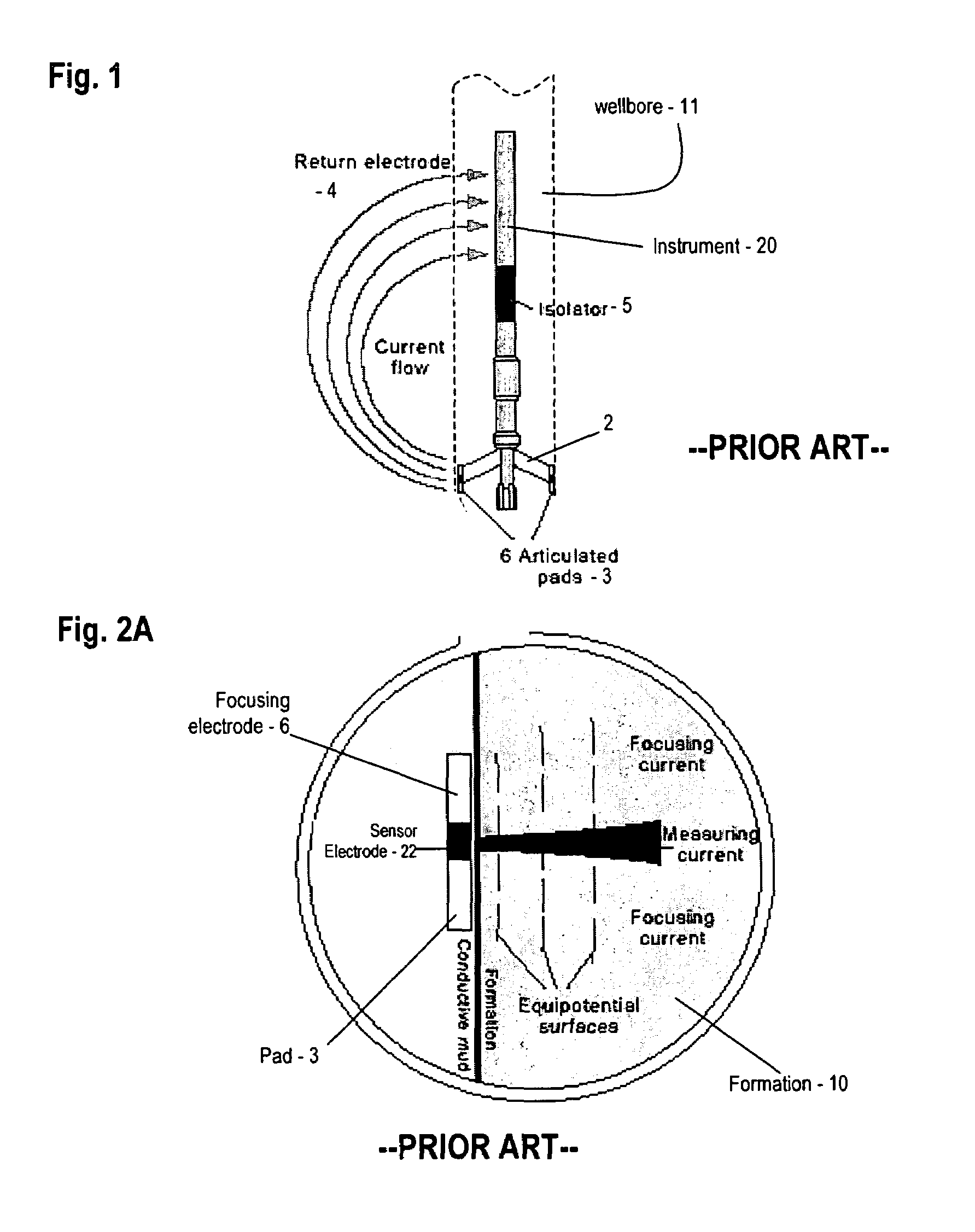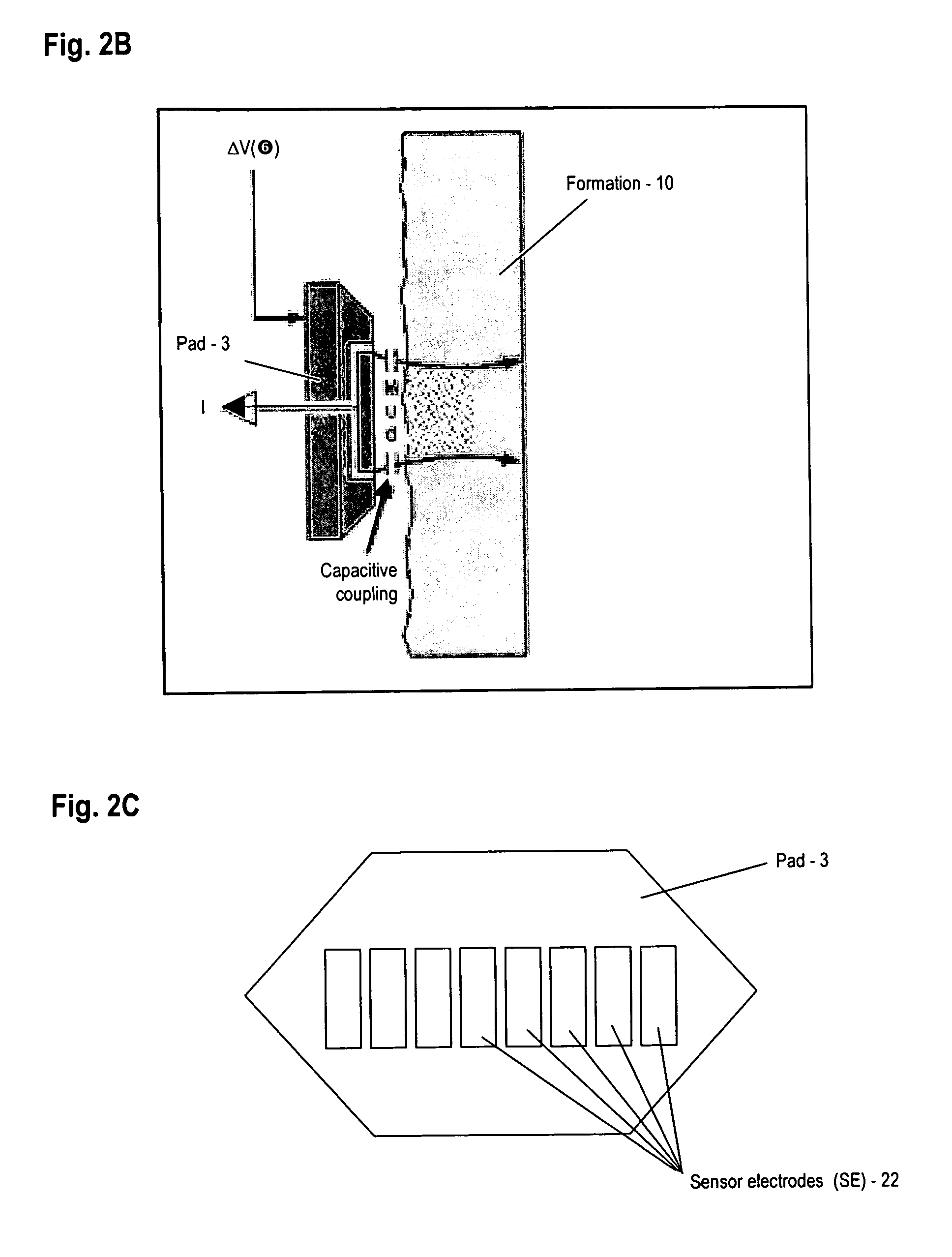Correction of sensor non-equipotentiality in a resistivity imaging device
a resistivity imaging and sensor technology, applied in seismology, waterlogging using reradiation, instruments, etc., can solve the problems of reducing the performance of the pad, reducing the accuracy of the image, and requiring a high degree of equipotentiality between the sensor electrodes
- Summary
- Abstract
- Description
- Claims
- Application Information
AI Technical Summary
Benefits of technology
Problems solved by technology
Method used
Image
Examples
Embodiment Construction
[0033]Disclosed are techniques for reducing or substantially eliminating capacitive coupling of sensor electrodes in a sensor. The sensor referred to herein is typically used as a component of an imaging instrument. The imaging instrument is useful for making resistivity measurements when either one of logging with a non-conductive drilling fluid and measuring while drilling (MWD) with a non-conductive drilling fluid. For purposes of the discussion herein, the imaging instrument is used while logging (separate from a drilling procedure). However, one skilled in the art will recognize that this is illustrative and not limiting of the teachings herein.
[0034]Aspects of logging a well using the instrument disclosed herein are depicted in FIG. 3. In FIG. 3, a cross-section of earth formations 10 along the length of a penetration referred to as a “wellbore”11 is depicted. Usually, the wellbore 11 is at least partially filled with a mixture of liquids including water, drilling fluid, mud, ...
PUM
 Login to View More
Login to View More Abstract
Description
Claims
Application Information
 Login to View More
Login to View More - R&D
- Intellectual Property
- Life Sciences
- Materials
- Tech Scout
- Unparalleled Data Quality
- Higher Quality Content
- 60% Fewer Hallucinations
Browse by: Latest US Patents, China's latest patents, Technical Efficacy Thesaurus, Application Domain, Technology Topic, Popular Technical Reports.
© 2025 PatSnap. All rights reserved.Legal|Privacy policy|Modern Slavery Act Transparency Statement|Sitemap|About US| Contact US: help@patsnap.com



